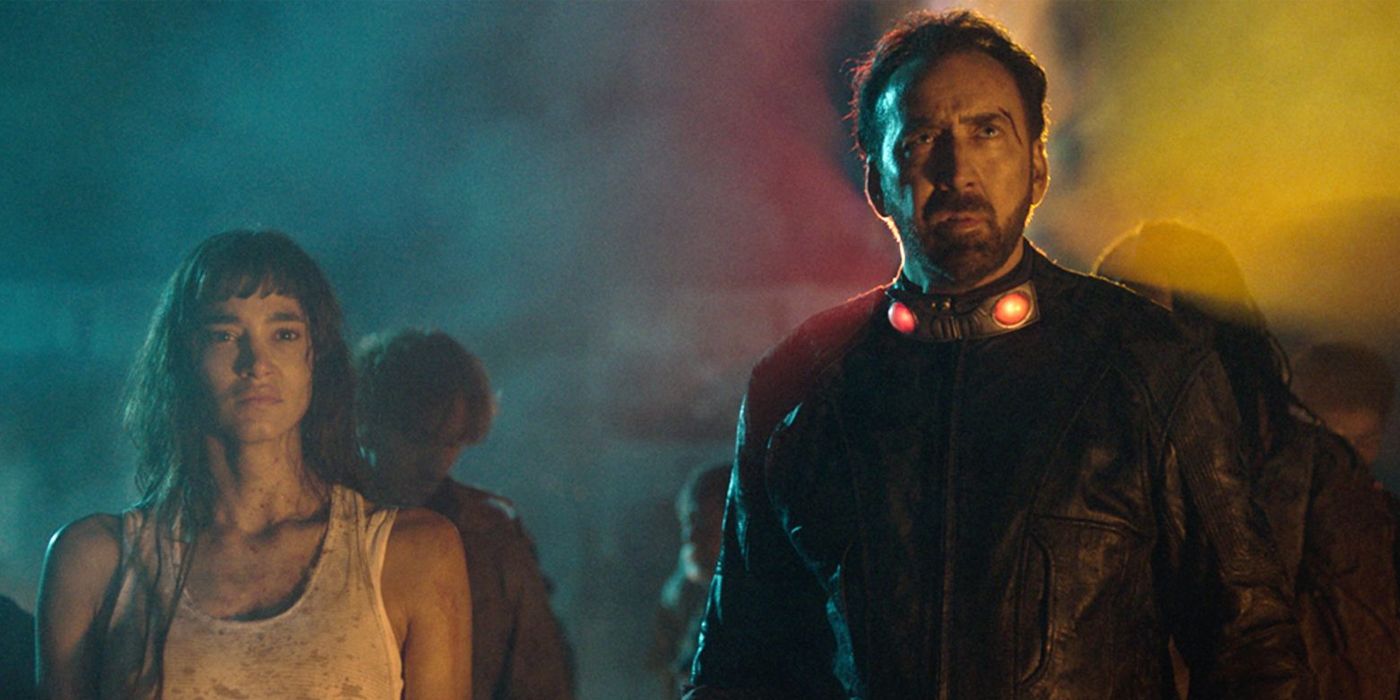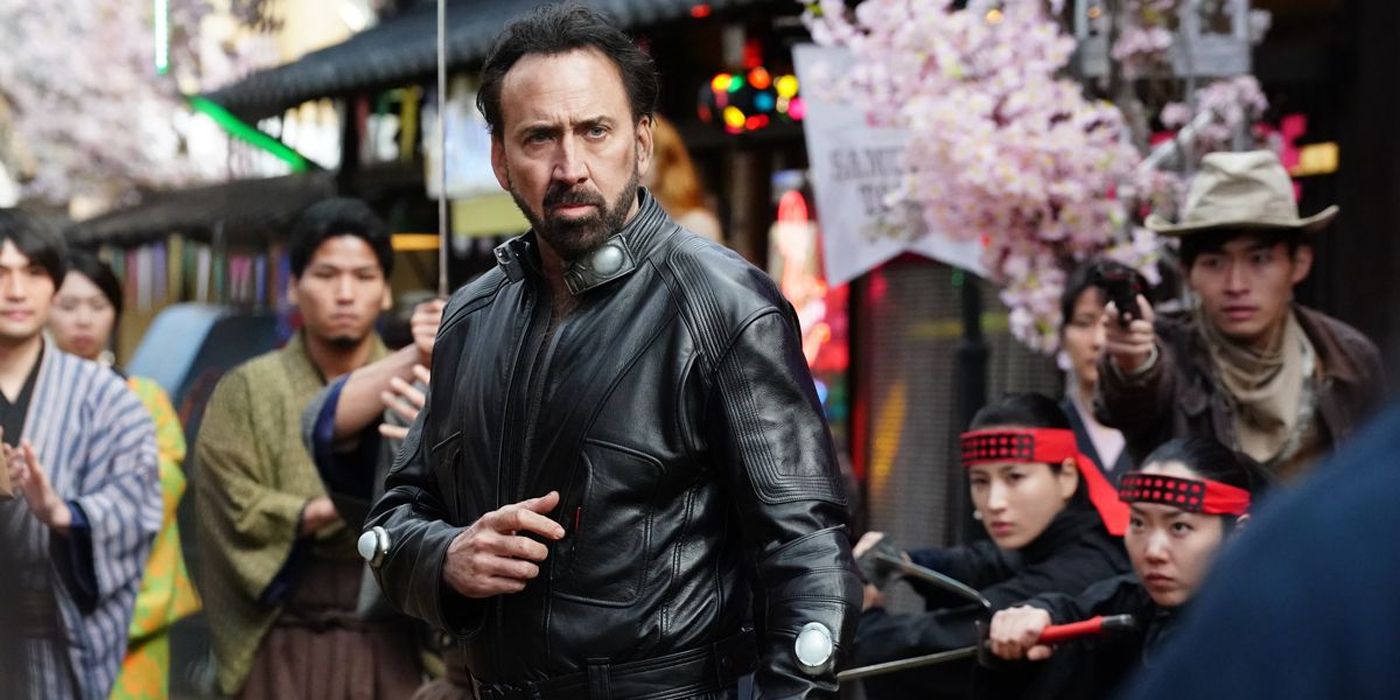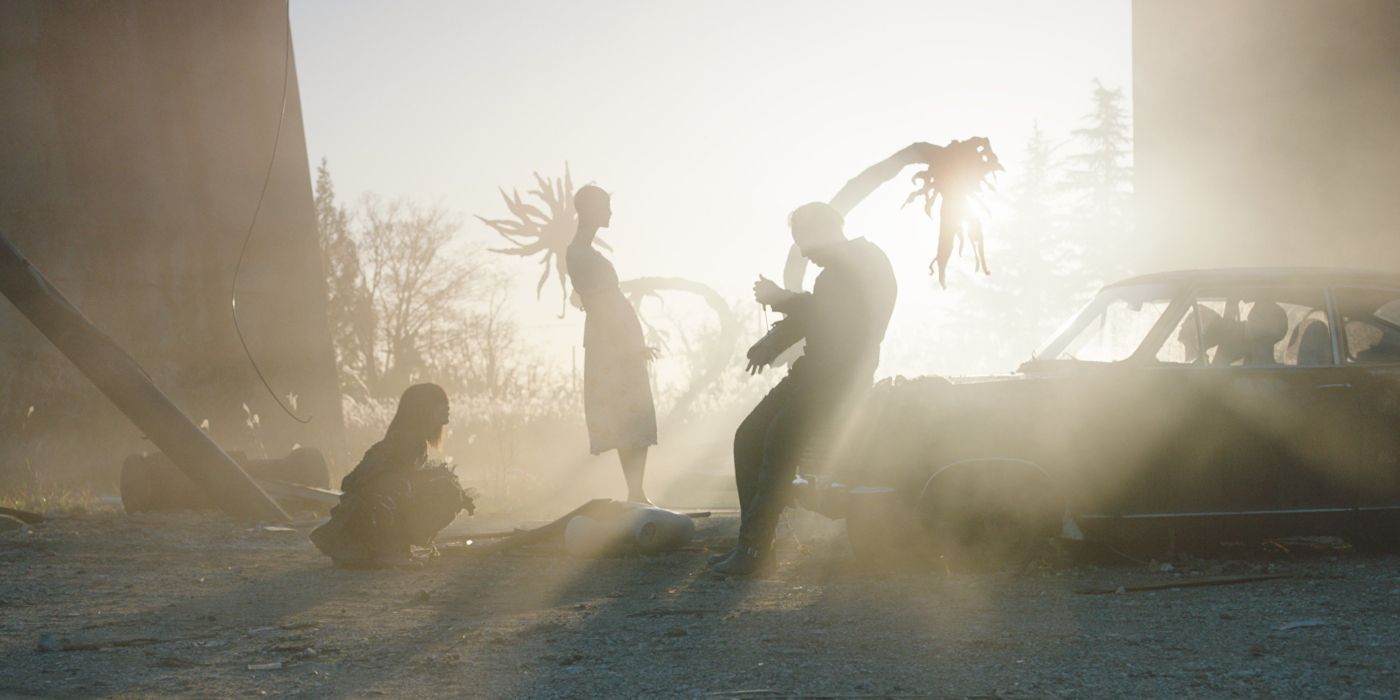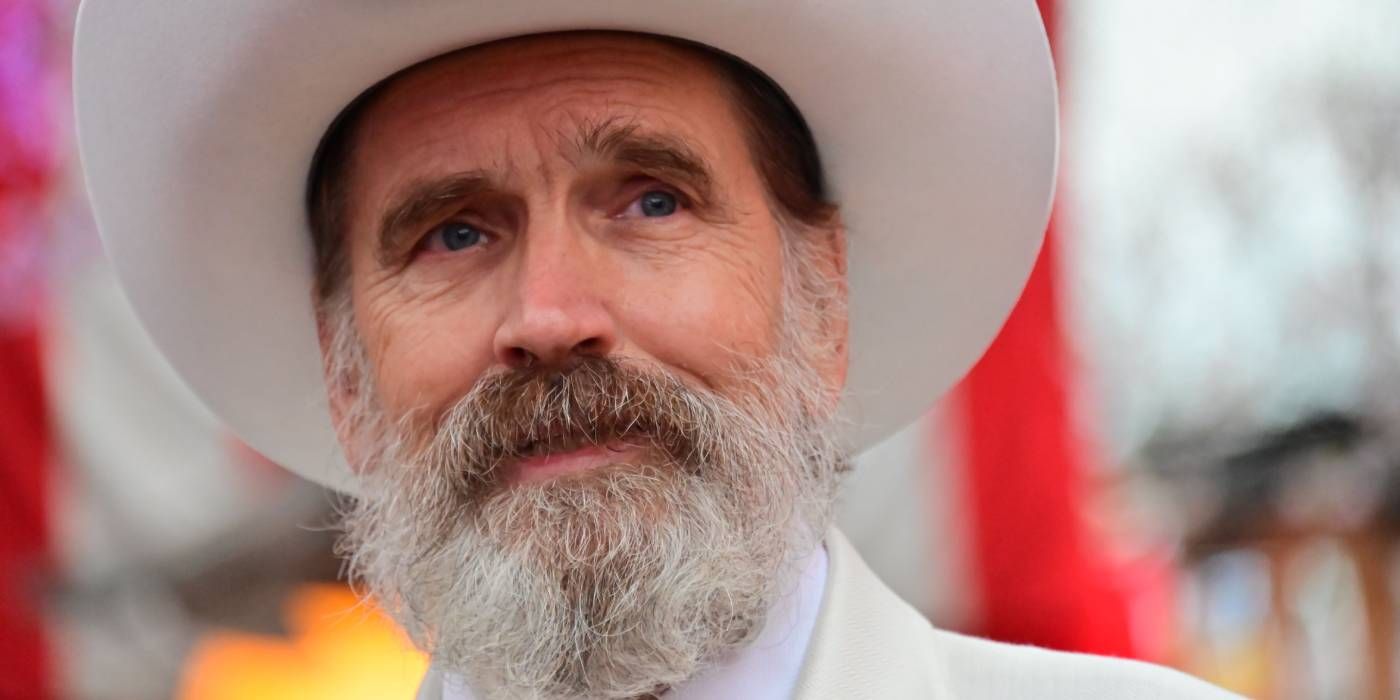Nicolas Cage's 2021 film Prisoners of the Ghostland is an excessive film. Directed by Sion Sono — an award-winning Japanese director known for being subversive and idiosyncratic — the movie is a highly stylized representative fable that gleefully and deliriously blends genres, themes, and images to create a unique (if at times, bizarre) experience. The plot is deceptively simple, but the story is told through such a perturbing assortment of visuals and events that it's nigh-incomprehensible, seemingly by design. Sono's Prisoners of the Ghostland is easily one of Cage's strangest films — and, based on the visuals alone, is destined to become a cult classic.
Prisoners of the Ghostland was written by Aaron Hendry and Reza Sixo Safai. On a basic level, the story follows Hero (played by Cage) on a mission to retrieve the young woman Bernice (Sofia Boutella), who ran away from her adoptive "grandfather," The Governor (Bill Moseley). Hero takes the assignment largely against his will; he's a prisoner, thanks to his role in a bank-robbery-gone-wrong with former partner Psycho (Nick Cassavetes). Hero is fitted with a special suit housing various bombs that are designed to prevent transgressions, and he is given a maximum of five days to complete the job — with his failure having fatal consequences.
Prisoners of the Ghostland is the rare exception in which the film surrounding Cage's performance is even more extreme than the actor's scenery-chewing. The movie is an anachronistic blend of Western and Japanese iconography and history, fusing elements of the Western genre with chanbara (samurai cinema) and Noh (a form of classical Japanese theater). There are sword-wielding samurai warriors alongside cowboys with guns, contrasted by geisha-like women with cell phones. Many of the townspeople wear masks and exposition is provided by a chorus (both key traits of Noh), yet The Governor looks and talks like a Dixie southern gentleman from the mid-19th-century. The stark contrasts of these juxtaposed images are endlessly disorienting, which is only enhanced by Sono's unusual, and often vivid, visual choices.
The setting in Prisoners of the Ghostland is limited to only a few locations — the Governor's territory, the Ghostland, and the space in between — but each area is so packed with intriguing details that the movie doesn't feel restrictive. Sono uses every millimeter of his set, packing in the maximum amount of decoration and extracting every possible ounce of visual appeal. From the saturated colors and ever-present twinkling lights to the constant tight-knot crowds of extras, everything in Prisoners of the Ghostland is excessive. So much emphasis is placed on the aesthetics and tone of the movie, though, that it detracts from the narrative. There are truly fascinating ideas at the core of this movie, but so often the over-the-top visual choices take precedent.
What's worse, occasionally the direction feels weird for weird's sake. Scenes that otherwise might have been thoughtful or poignant are reduced to a discordant collection of images that are devoid of meaning. In many ways, Cage is in top form in Prisoners of the Ghostland, committing to even the most ridiculous dialogue and behavior with zeal and dedication. Cage is easily the most entertaining factor, almost reveling in the ridiculousness of the situations. He casually flips from deadpan to swagger, inexplicably bouncing between tones.
Hero is a bit underdeveloped, however, and his motivations are undefined. This is a problem across the movie and it's never clear why the characters do what they do. While that might have been an intentional choice, to make the characters representative of concepts rather than fully realized human beings, it makes the movie hard to follow. The larger narrative is kept vague, which only compounds the problem. Often, Prisoners of the Ghostland feels vacuous, and while it presents many opportunities for analysis and interpretation, it lacks a fundamental, underlying message to keep the pieces together.
Prisoners of the Ghostland is the sort of movie that eschews a coherent plot for the sake of a message — but here, that message often comes across as the indiscernible ravings of an unhinged mind. While this very well could be the point (and style over substance is a valid approach to art), it doesn't make for a watchable feature film. As a subversive Arthouse film, Prisoners of the Ghostland is a mixed success: it is somehow both not enough and far, far too much. There are those who will be captivated by the strange visuals alone, while others will be drawn to the campy performances by Cage, Cassavetes, and the supporting roles; however, the average moviegoer will find the overall product baffling and extreme.
Prisoners of the Ghostland poses a unique challenge to movie reviewers: in terms of traditional standards, Sono's film is not "good" — some of the acting is wooden, the story is hard to follow, the characters ill-defined, etc. — but in terms of pure artistic merit, there's certainly something there. Hate it or love it, Prisoners of the Ghostland is as unforgettable as it is expressive and provocative, and isn't that the fundamental purpose of art? This is not a movie everyone will enjoy, and even those familiar with Arthouse cinema may find some of the choices here off-putting. Regardless, Prisoners of the Ghostland has the potential to become a touchstone film in the genre — and at the very least seems destined for a Criterion release.
Prisoners of the Ghostland releases in theaters and on video on demand on September 17, 2021. It is 103 minutes long and is not rated.




